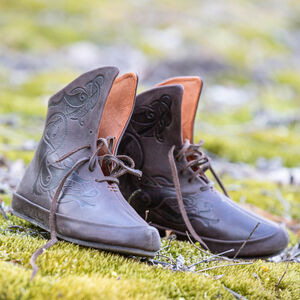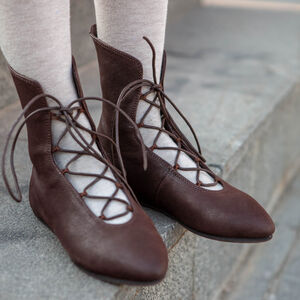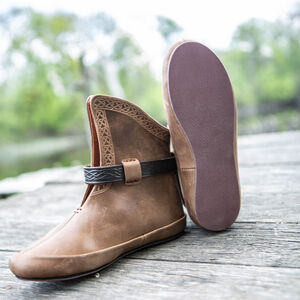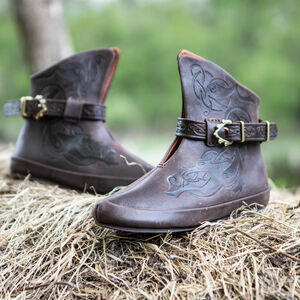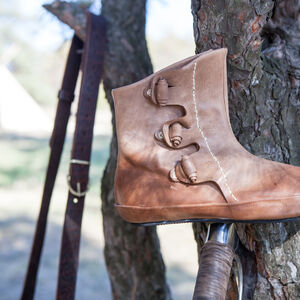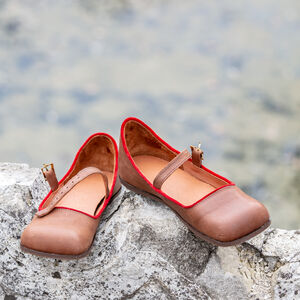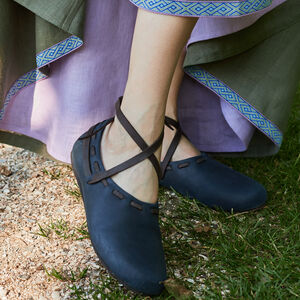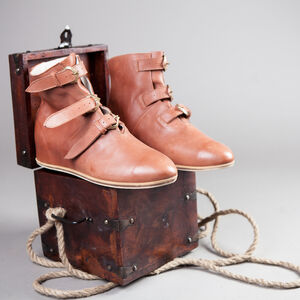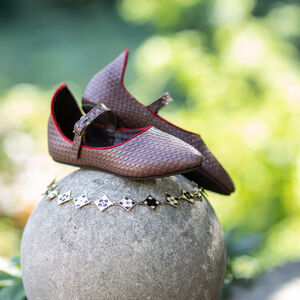Medieval shoes for sale
In our medieval shoes store you can find a great selection of models made of high quality leather of different types:
- Suede leather of 6 saturated colours
- Thick reliable leather of different shades of brown as well as milk white, rubbed brown and black
- Leather with burned ornaments
- Leather with embossed ornaments available in 6 colour options
- Bicolour embossed leather of 7 colour combinations
Historical and geographical ranges are covered impressively and even go far beyond the existed examples both in terms of comfort and visual aesthetics. Inspired by historical findings, we however allow ourselves to ameliorate the manufacturing process by putting into operation modern shoe last technology so that you feel comfortable wearing your middle ages shoes for a long while either at the battle range or in the ballroom.
There is a variety of items that match perfectly well to the modern lifestyle and even a corporate dress code, in the meantime keeping the appearance of our custom medieval shoes within “Oh, that would fit perfectly my persona!”.
And no doubts we have something to offer those who pursue historical sources precisely: early viking sandals, celtic turnshoes from Rurikovo gorodische, late Norman period and classic european XIV century style.
For most of the models there are options for the outer sole as well. You can tend to choose historical accuracy and buy medieval shoes with thick natural leather sole, or stability and non-skid rubber sole. The latter has proven itself to be indispensable for combat training activity and at the battlefield.
Glance down the ages at the shoes
As there was no particular need in wearing something in warm regions, people there tended to walk barefoot or wore thong sandals at best. Closer to our days southern part of the Europe combined braided jute rope outsole and upper fabric part into espadrilles.
Northern or mountainous regions required more careful attitude to the feet: since the dawn of time they’ve used pieces of leather gathered with a lacing while wandering from place to place and even developed a snowshoe. For several centuries the most widespread technology was a turnshoe method of construction of medieval shoes – it meant the sewing process to be performed inside out. Later, in 16th century, it was replaced by the welted rand method which eliminated the possibility because of stiff sole.





